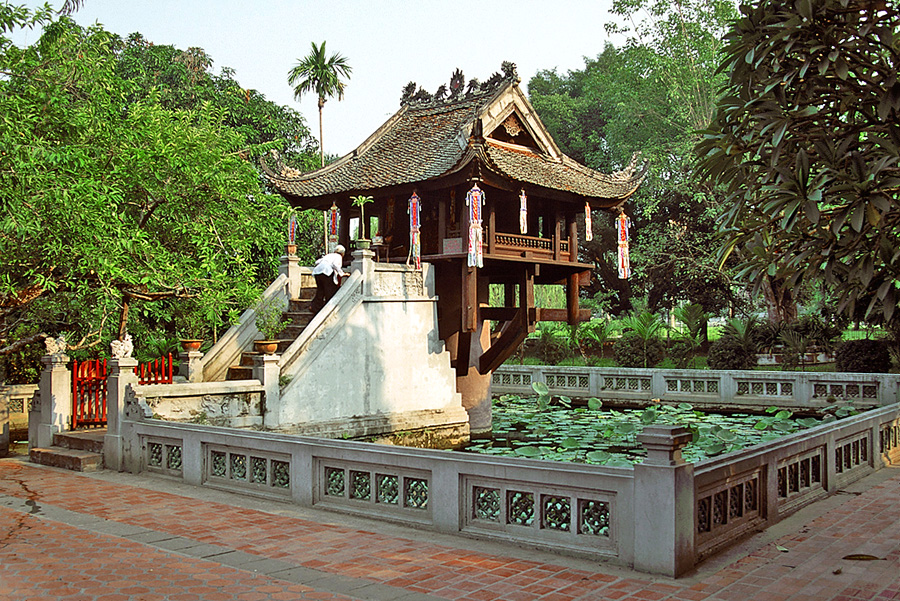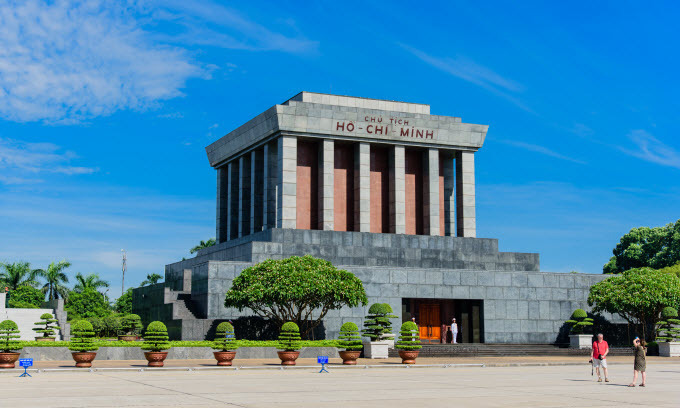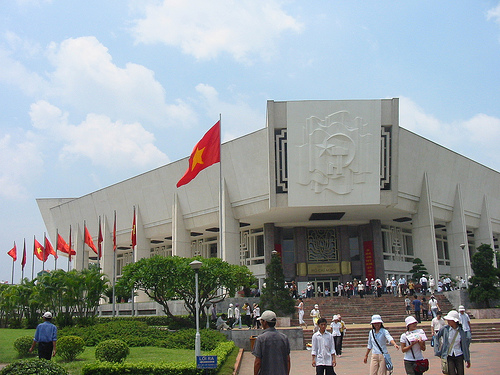Ba Dinh Square is the largest square in Vietnam, located on Hung Vuong Street, Ba Dinh District. The square is the historical destination where the Ho Chi Minh Mausoleum was built. It is also a place to recognize many important landmarks in Vietnamese history, especially on September 2nd, 1945, the President of the Provisional Revolutionary Government of Vietnam Democratic Republic Ho Chi Minh read the Declaration of Independence giving birth to the People’s Democratic Republic of Vietnam.
Ba Dinh Square Hanoi is not only a venue of many important historical events of the country, but also a place where many historical and architectural works are gathered, attracting many tourists to visit such as President’s Mausoleum, One Pillar Pagoda, Ho Chi Minh Museum .
One Pillar Pagoda
One Pillar Pagoda is a modest temple is constructed from wood based on a single stone pillar crafted into the shape of a lotus blossom and has been rebuilt several times, most recently in 1955 when the base was destroyed during the French evacuation. The pagoda is often used as a symbol for Hanoi and remains one of the city’s most revered sights.
The most impressive point of the One Pillar Pagoda is the floating pagoda, which looks like a lotus growing up from the lake, shining brightly in the morning sunshine.
Ho Chi Minh Mausoleum
Ho Chi Minh Mausoleum in Ba Dinh Square is one of the most visited attractions in Hanoi. It is the final resting place of Ho Chi Minh, the most iconic and popular leader of Vietnam, known to his people as ‘Uncle Ho’. His body is preserved here in a glass case at the Ho Chi Minh Mausoleum .
Presidential Palace Hanoi
Presidential Palace Hanoi, established in 1900 by French architect Auguste Henri Vildieu, was intended to be Ho Chi Minh’s official residence but the Vietnamese leader had opted for a traditional Vietnamese stilt-house instead. The three-storey, mustard yellow building features 30 rooms built in colonial French architectural style, an orchard, carp pond, and a 91-metre long boulevard surrounded by lush gardens. As political gatherings are still held at Presidential Palace Hanoi, visitors are only allowed to explore the gardens and Ho Chi Minh’s stilt home.
The Ba Dinh Square is always open for all tourists, no entrance fee is required.
Ho Chi Minh Museum
The Ho Chi Minh Museum is is located in the Ho Chi Minh complex that constructed in the 1990s, it is dedicated to the late Vietnamese leader Ho Chi Minh and Vietnam’s revolutionary struggle against foreign powers.
The museum consists of a collection of artifacts, miniatures and various gifts gathered nationally and internationally. In addition to Vietnamese, the museum also provides descriptions written in English as well as French. Guided tours are also available upon request.
Don’t hesitate to pack your luggage, come and discover the amazing land. For more information please visit our family website:
For Vietnam online visa Govietnamvisa.com
For Vietnam local tours: Govietnamtourist.com
For exploring more parts of Vietnam:
http://www.vietnam-online.org/






